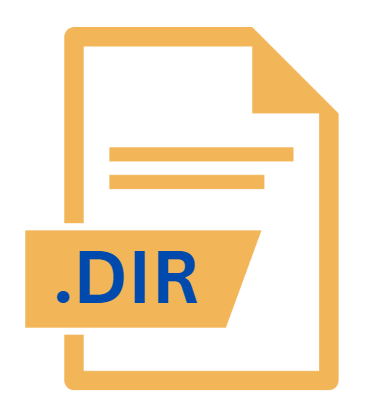.DIR File Extension

Adobe Director Movie
| Developer | Adobe Systems |
| Popularity | |
| Category | Video Files |
| Format | .DIR |
| Cross Platform | Update Soon |
What is an DIR file?
The .DIR file extension is associated with Adobe Director, a multimedia application development tool that was widely used to create interactive content such as games, educational software, and multimedia presentations.
Director’s .DIR files are essentially project files that contain a range of multimedia elements and interactive features, including graphics, animations, sounds, and scripts.
These files serve as the core components of multimedia applications developed with Director, encapsulating everything necessary for the project to function.
More Information.
Adobe Director was designed to facilitate the creation of rich multimedia applications with a high level of interactivity.
Its development stemmed from the need for a more dynamic and interactive medium for multimedia presentations, beyond static content.
The .DIR file format played a central role in this vision, as it allowed developers to compile and manage a wide variety of multimedia assets within a single file.
Initially, Director was used for creating CD-ROM applications and interactive educational programs, capitalizing on its ability to integrate video, audio, animations, and interactivity.
Over time, as internet capabilities evolved, Director was used to create Flash-based web content and interactive web applications.
The .DIR file format evolved alongside these uses, maintaining its importance as a container for interactive content.
Origin Of This File.
Adobe Director, originally developed by Macromedia, was first released in 1987 as a tool for creating multimedia applications.
The .DIR file extension was introduced as part of this software to store project files. When Adobe acquired Macromedia in 2005, Director and its associated file formats, including .DIR, continued to be supported.
Despite Adobe’s discontinuation of Director in 2017, .DIR files remain a critical part of the legacy of multimedia software development.
File Structure Technical Specification.
A .DIR file is a complex container format that includes various types of multimedia data and project-specific information. The file structure of a .DIR file typically includes:
- Resources: This includes all multimedia assets like images, audio files, and video clips.
- Scripts: Director allows for scripting using the Lingo programming language, which is stored within the .DIR file to control interactions and logic within the project.
- Movie Clips and Stages: These are the interactive and visual elements that make up the content of the project. They are arranged and managed within the file to create the final multimedia experience.
- Project Metadata: This includes settings, preferences, and other information required to run the project properly.
The technical specifications of a .DIR file involve a proprietary format developed by Macromedia/Adobe, which means it is not openly documented. The file’s internal structure is optimized for handling a diverse set of multimedia elements and maintaining project data cohesively.
How to Convert the File?
Converting .DIR files to other formats is not straightforward due to their proprietary nature and the discontinuation of Adobe Director. There are a few approaches that can be taken:
- Using Director Software: The most reliable method is to use Adobe Director itself. Users can open the .DIR file in Director and then export the project to other formats supported by the software, such as HTML5 or standalone executables.
- Third-Party Tools: Some third-party tools and converters might offer limited functionality for exporting content from .DIR files. These tools are typically designed for specific types of content within the file and may not handle all elements effectively.
- Manual Extraction: For those with technical expertise, it is possible to manually extract multimedia assets from .DIR files by using binary editors or specialized extraction tools. This approach requires understanding the file’s internal structure and may not preserve interactive elements.
Advantages And Disadvantages.
Advantages:
- Integration of Multimedia Elements: .DIR files can encapsulate a wide range of multimedia assets and scripts, providing a comprehensive solution for multimedia projects.
- Interactivity: Director’s scripting capabilities (through Lingo) allow for sophisticated interactive elements, making .DIR files suitable for complex applications like games and simulations.
- Legacy Compatibility: For projects created with older versions of Director, .DIR files maintain compatibility with the Director environment, ensuring that legacy projects can still be accessed and modified.
Disadvantages:
- Obsolescence: Adobe Director was discontinued in 2017, which means that .DIR files are no longer supported by modern software, leading to potential challenges in accessing or updating these files.
- Limited Accessibility: The proprietary nature of the .DIR file format limits its compatibility with other software applications. This restricts the ability to open or convert .DIR files without specialized tools.
- Complexity: The internal structure of .DIR files can be complex, making it difficult for users without expertise in Director to manage or modify the contents of these files.
How to Open DIR?
Open In Windows
- On Windows, the most straightforward method to open .DIR files is to use Adobe Director. If Director is not available, some users may attempt to use third-party viewers or converters that might offer limited support for .DIR files.
Open In Linux
- Linux users face additional challenges, as Adobe Director was never natively available for Linux. Opening .DIR files on Linux may require using Windows emulation tools like Wine or virtual machines to run Adobe Director. Third-party tools and manual extraction methods are other potential solutions, but they may be less reliable.
Open In MAC
- For macOS users, Adobe Director for macOS (if available) would be the primary application for opening .DIR files. Since Adobe Director is no longer supported, alternatives are limited, and users may need to rely on Windows-based solutions or conversion tools.












